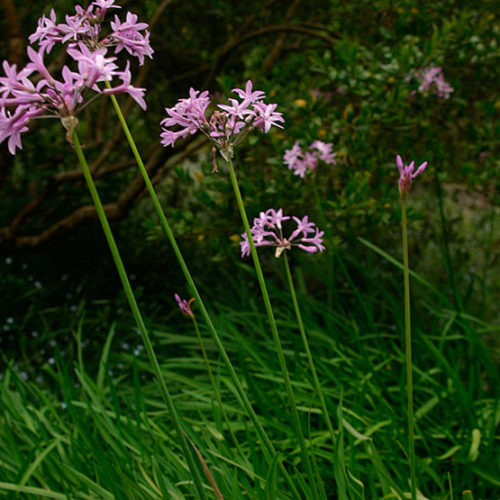Understanding the Art of Agapanthus Treatment: Necessary Steps for Healthy And Balanced Growth and Dynamic Blooms
In the world of cultivation, the farming of agapanthus stands as a fulfilling undertaking for those that seek to nurture these elegant flowering plants. From selecting the right variety to mastering pruning methods, the trip towards cultivating thriving agapanthus plants is diverse and holds the essential to unlocking the full possibility of these herb treasures.

Picking the Right Agapanthus Range

When selecting the appropriate Agapanthus variety for your garden, think about elements such as environment suitability, bloom color, and development habit. Agapanthus, generally understood as Lily of the Nile or African lily, comes in a range of shades ranging from shades of purple and blue to white. Choose a flower shade that complements your existing garden palette to produce an unified landscape. Furthermore, consider the climate in your region to make certain the Agapanthus range you choose can flourish in your specific problems. Some ranges are a lot more tolerant of cold temperatures, while others choose warmer environments. Comprehending the development routine of different Agapanthus varieties is essential for appropriate placement within your garden. Some selections have a clumping growth routine, perfect for containers or boundaries, while others have an even more spreading nature, ideal for ground cover or mass growings. By thoroughly evaluating these factors, you can select the excellent Agapanthus selection to enhance the charm of your garden.
Perfect Growing Problems
Taking into consideration the optimum ecological demands is essential for effective Agapanthus cultivation. Agapanthus grows in well-draining dirt with a slightly acidic to neutral pH degree. When planting, select a place that obtains full sunshine to partial shade. In hotter climates, giving some afternoon shade can stop scorching of the fallen leaves. Agapanthus plants are delicate to cool temperature levels and need to be shielded from frost during winter season.
To guarantee healthy and balanced development and dynamic blossoms, plant Agapanthus bulbs at a deepness of about 2-4 inches and room them 8-12 inches apart. Mulching around the base of the plants aids preserve wetness and reduces weed development.
Watering and Feeding Tips
Maintaining proper moisture levels and giving necessary nutrients are essential components in the care routine for Agapanthus plants. When it comes to watering Agapanthus, it is critical to strike a balance. These plants choose constantly moist dirt but are prone to root rot if overwatered.
Fertilizing Agapanthus is crucial for promoting healthy and balanced development and respected blooms. Use a balanced plant food, such as a 10-10-10 formula, in the very early spring as brand-new development emerges. By complying with these watering and feeding ideas, you can ensure your Agapanthus plants thrive and produce vivid, resilient flowers.
Trimming Techniques for Agapanthus
Trimming Agapanthus plants useful content at the proper times and with correct strategies is essential for keeping their health and promoting optimal development and blooming. The perfect time to prune Agapanthus is in late winter or early springtime before brand-new growth emerges.
For flowered stems, wait till the blossoms have actually withered and after that trim them back to the base. This not just cleans the plant's look however additionally urges the development of brand-new blossom buds. Deadheading invested blossoms can likewise reroute the plant's power right into creating even more flowers instead of establishing seeds. Nonetheless, if you want to gather seeds for breeding, leave some blossoms to completely dry and mature on the plant.
Remember to use tidy, sharp tools to make precise cuts and minimize the risk of presenting diseases. Agapanthus. Regular trimming will assist keep your Agapanthus looking healthy and balanced and cool while ensuring an abundant screen of lovely flowers
Dealing With Typical Pests and Illness
After making sure correct pruning website link methods for Agapanthus, it is important to deal with common insects and conditions that can impact the health and vigor of these plants. One typical insect that impacts Agapanthus is the Agapanthus gall midge.
Additionally, Agapanthus plants can suffer from origin rot if they are planted in badly draining pipes soil. By being alert and taking punctual activity versus insects and illness, you can assist your Agapanthus plants grow and produce vibrant blossoms. Agapanthus.

Verdict
Finally, mastering the art of agapanthus treatment involves choosing the best range, offering optimal growing conditions, proper watering and fertilizing, ideal pruning methods, and resolving usual pests and illness. By adhering to these crucial actions, you can guarantee healthy growth and dynamic flowers for your agapanthus plants. Keep in mind to frequently monitor and preserve your plants to advertise their general wellness and durability.
To ensure healthy and balanced development and lively blossoms, plant Agapanthus light bulbs at a deepness of concerning 2-4 inches and area them 8-12 inches apart. By following these watering and fertilizing pointers, you can guarantee your Agapanthus plants flourish and produce dynamic, long-lasting blooms.
One typical insect that affects Agapanthus is the Agapanthus gall midge. Furthermore, Agapanthus plants can experience visit their website from origin rot if they are planted in badly draining pipes dirt. By following these necessary actions, you can guarantee healthy development and dynamic blooms for your agapanthus plants.